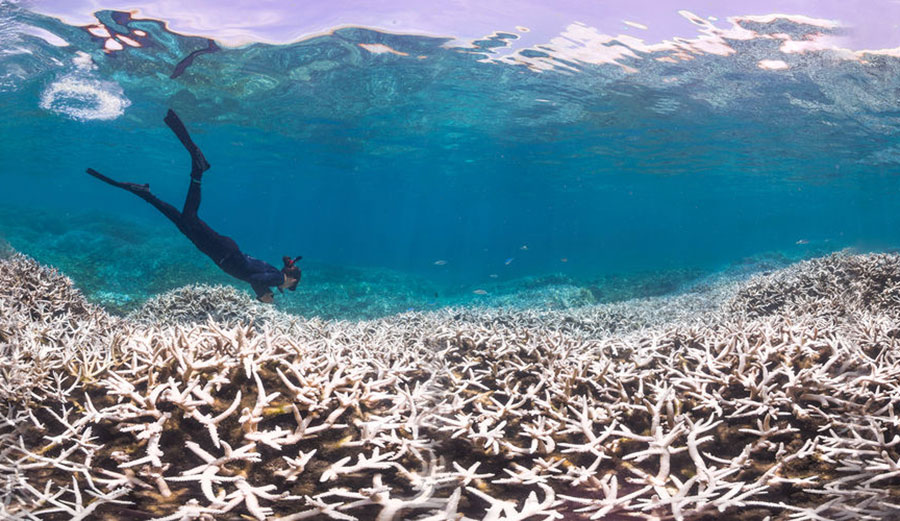
A coral reef after a bleaching event. Photo: PopSci
It’s not a rumor that our oceans are warming up. If you need proof (more than the all of the most respected researchers on earth doing the hard work for you), look no further than the world’s coral reefs. Last year, it was revealed that the Great Barrier Reef went through the biggest coral bleaching event ever, and now the Japanese environment ministry is reporting that over 70% of the Sekisei Lagoon in Okinawa, the largest reef in Japan, is dead.
Reefs are in bad shape, and they’re only getting worse. It’s not a hoax, it’s got nothing to do with Al Gore, and the people concerned about it aren’t (for the most part) whack-job tree-huggers with hemp pants. They are (again, for the most part) regular people who love fresh air and clean water, people who love nature in general. It is, after all, our playground, and no one wants to play in a shit-filled playground.

The Sekisei Lagoon.
For those who might be unaware of exactly what a bleaching event consists of, it’s pretty simple: when coral sits in water that’s warmer than average for an extended period of time, they get rid of the algae inside them. Without that, the coral turns white and dies.
Japan’s reef has been struggling for some time now, but the Environment Ministry’s recent study was more alarming than expected. After a survey of 35 locations in the lagoon, the exact amount of dead coral came to 70.1%. At the very southern tip of the Japanese archipelago, the reef sits between Iriomotejima and Ishigaki, where, according to IFL.com, “the average temperatures between June and August in the Okinawa island chain, in which the reef is located, topped 30°C (86°F) for the first time since records began in 1982.”

